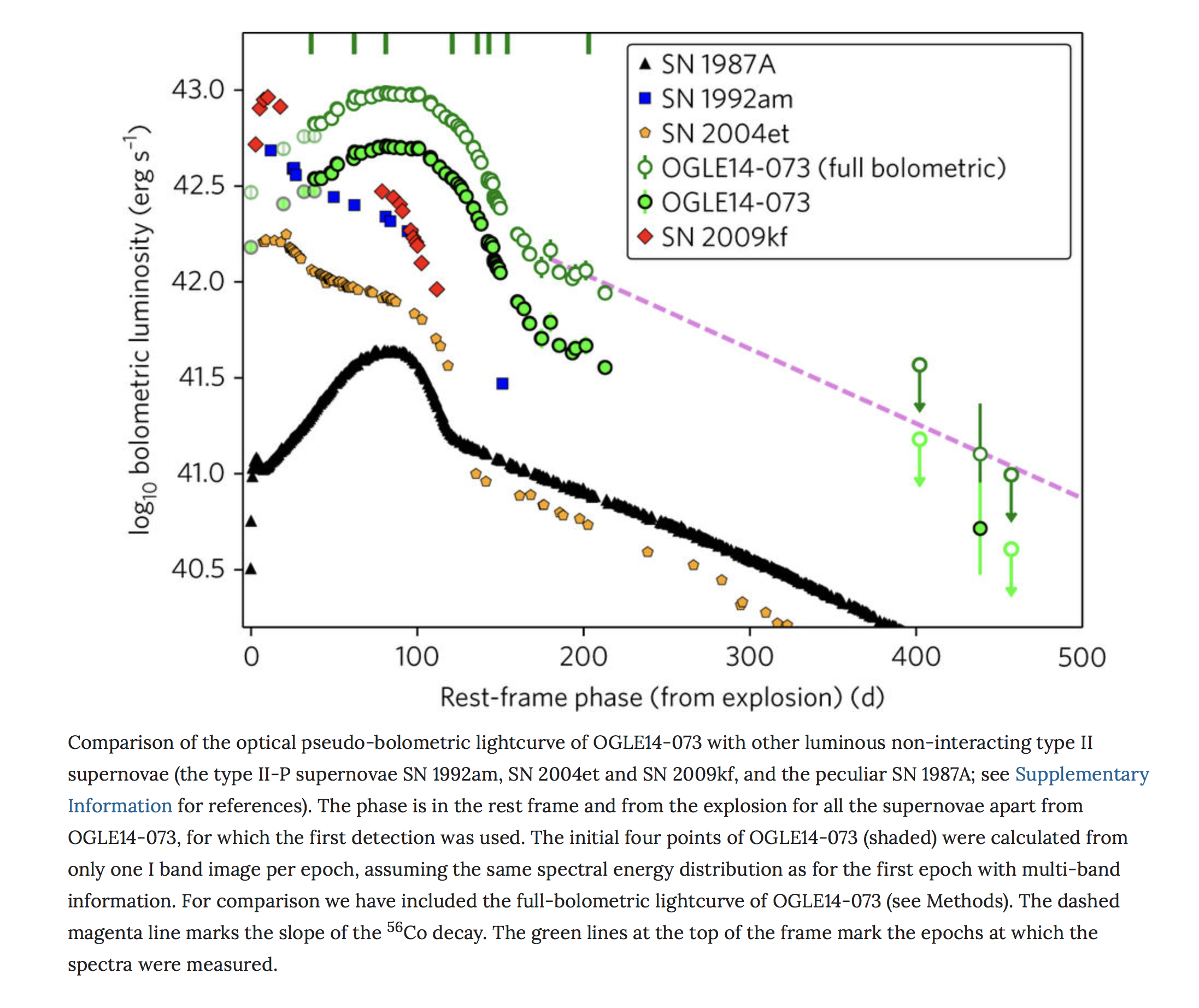Padova-Asiago Supernova Group
Highlights
Hydrogen-rich supernovae beyond the neutrino-driven core-collapse paradigm
Terreran, G. et al 2017, Nature Astronomy 1, 713 (link to pdf)
Type II supernovae are the final stage of massive stars (above 8Msun) which retain part of their hydrogen-rich envelope at the moment of explosion. They typically eject up to 15 Msun of material, with peak magnitudes of -17.5 mag and energies in the order of 10^51 erg, which can be explained by neutrino-driven explosions and neutron star formation. Here, we present our study of OGLE-2014-SN-073, one of the brightest type II supernovae ever discovered, with an unusually broad lightcurve combined with high ejecta velocities. From our hydrodynamical modelling, we infer a remarkable ejecta mass of 60 (+42-16) Msun and a relatively high explosion energy of 12.4 (+13.0-5.9)x10^51 erg. We show that this object belongs, along with a very small number of other hydrogen-rich supernovae, to an energy regime that is not explained by standard core-collapse neutrino-driven explosions. We compare the quantities inferred by the hydrodynamical modelling with the expectations of various exploding scenarios and attempt to explain the high energy and luminosity released. We find some qualitative similarities with pair-instability supernovae, although the prompt injection of energy by a magnetar seems to be a viable alternative explanation for such an extreme event. 95
